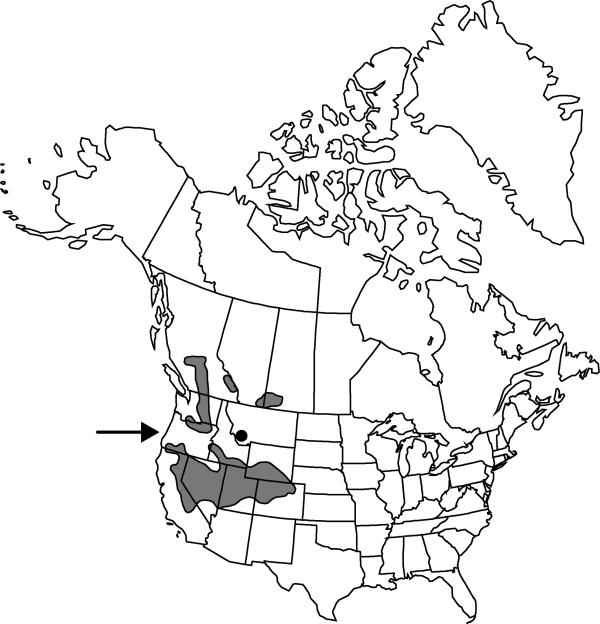Atriplex truncata
Proc. Amer. Acad. Arts 8: 398. 1873.
Herbs, typically erect. Stems simple or more commonly branched throughout, mainly 2–8 (–10) dm, branches mostly obtusely angled; herbage scurfy, becoming glabrate. Leaves alternate or proximalmost opposite, short petiolate proximally, sessile and often cordate-clasping distally; blade ovate to deltoid or oval, 4–30 (–40) × 3–30 mm, base truncate or subhastate to rounded, margin entire or dentate, apex acute to obtuse. Flowers in axillary glomerules. Staminate flowers in glomerules mainly in distal axils; sepals 3–5. Fruiting bracteoles scarcely compressed, 2–3 mm and as wide, apex truncate to broadly rounded, with 3 (or more) teeth across summit, surfaces smooth (or rarely tuberculate). Seeds brown, 1–2 mm wide. 2n = 18.
Phenology: Flowering summer–fall.
Habitat: Saline saltgrass-greasewood-rabbitbrush communities, and other pans or palustrine or lacustrine habitats
Elevation: 400-2700 m
Distribution

Alta., B.C., Sask., Calif., Colo., Idaho, Mont., Nev., Oreg., Utah, Wash., Wyo.
Discussion
Selected References
None.
Lower Taxa
"/2" is not declared as a valid unit of measurement for this property."dm" is not declared as a valid unit of measurement for this property."dm" is not declared as a valid unit of measurement for this property.
